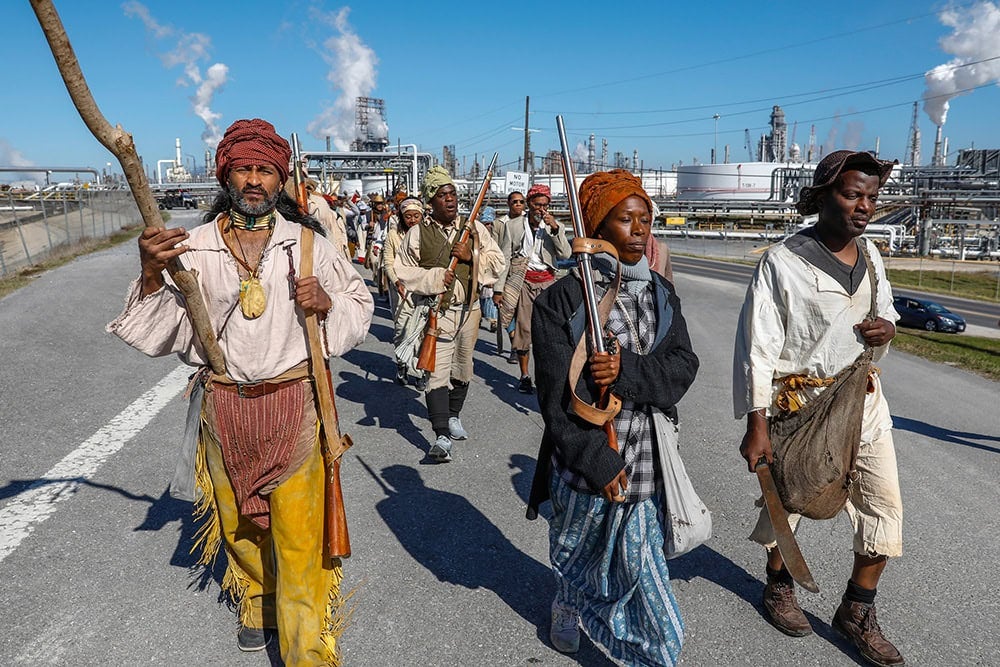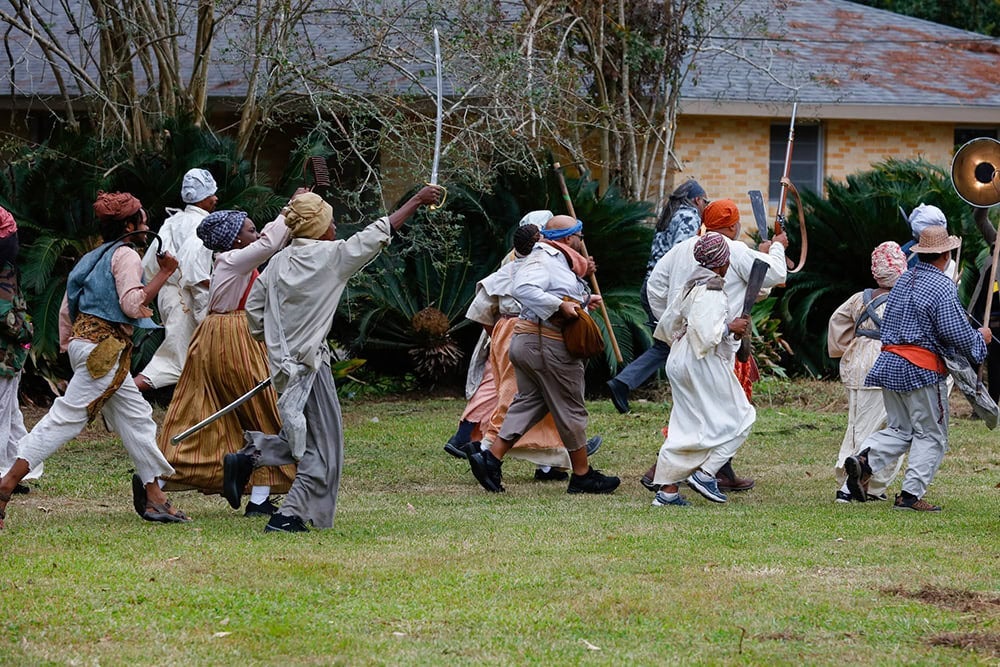This essay is part of German Coast Uprising, 1811 / 2019, a series of stories responding to the Slave Rebellion Reenactment initiated by artist Dread Scott outside New Orleans last November. Read the letter from the editor introducing the series here.

While preparing for the Slave Rebellion Reenactment in New Orleans last November, I considered the profound questions and concerns I thought could be addressed by participating in the performance. I thought that, as a man descended from African people who were enslaved, I would benefit from understanding the trauma that my ancestors may have experienced and why this trauma still persists today in our communities. I also thought that this action would build a broader and more empathetic understanding of the history of this country and region and provide more information and truth about how the United States became what it is today.
I thought I could help my grandchildren to develop a shield of truth from racist misbeliefs directed at them. I thought I could help them see a more accurate and truthful understanding of history. You see, my grandchildren’s history books say their ancestors were immigrants to this country. The truth is that they were stolen from their homes and enslaved. I believe we can’t move forward in a positive way unless we all can see our past for what it is.
I knew the outcome of this historical event, but what if these brave people would had achieved a different end? What if the rebellion had succeeded? How would our present be different? What if this imagined outcome could the way we see ourselves today?

The first morning was cold and damp. Reenactors went out in groups from the gathering place. The first group represented the initiators at the Andry house; the rest waited our turn to join in the march. We all received our marching orders together before anyone went out, but some of us felt the need to prepare for our journey by asking the permission of our ancestors to take on this task. This small group went outside to make this request and, before we knew it, there were many in our circle. It just happened that a student from the University of New Orleans had sage, which we used in our impromptu ceremony.
After a long and dreary first day, the next day was munificently sun-filled. Some of the elders and others organized a circle for us to call the names of the incredibly brave people we were attempting to remember. When the Army of the Enslaved reached the former Fort St. Charles after two days of marching, I was not prepared for the emotional transformation I experienced. My soul felt as if it had joined my ancestors. It was as if they met us at the U.S. Mint Museum—the former Fort St. Charles—as they had planned. I have no idea if I am a direct descendant from the original army, but that did not matter. I experienced an amazing rush of exhilaration, joy, and sadness, all rolled into a whirlwind of visceral emotion. The other reenactors and I burst into dance, and the drummers began drumming—no longer in their lines as planned but in undulating, concentric circles—all of us singing and dancing, raising our weapons in the air, proclaiming, Freedom! Liberty!
Afterwards, I went to the Tomb of the Unknown Slave to give thanks and to ask for help to use this experience to continue the work ahead.
Dread Scott’s Slave Rebellion Reenactment took place November 8 – 9, 2019, with reenactors marching between LaPlace and New Orleans, Louisiana.




